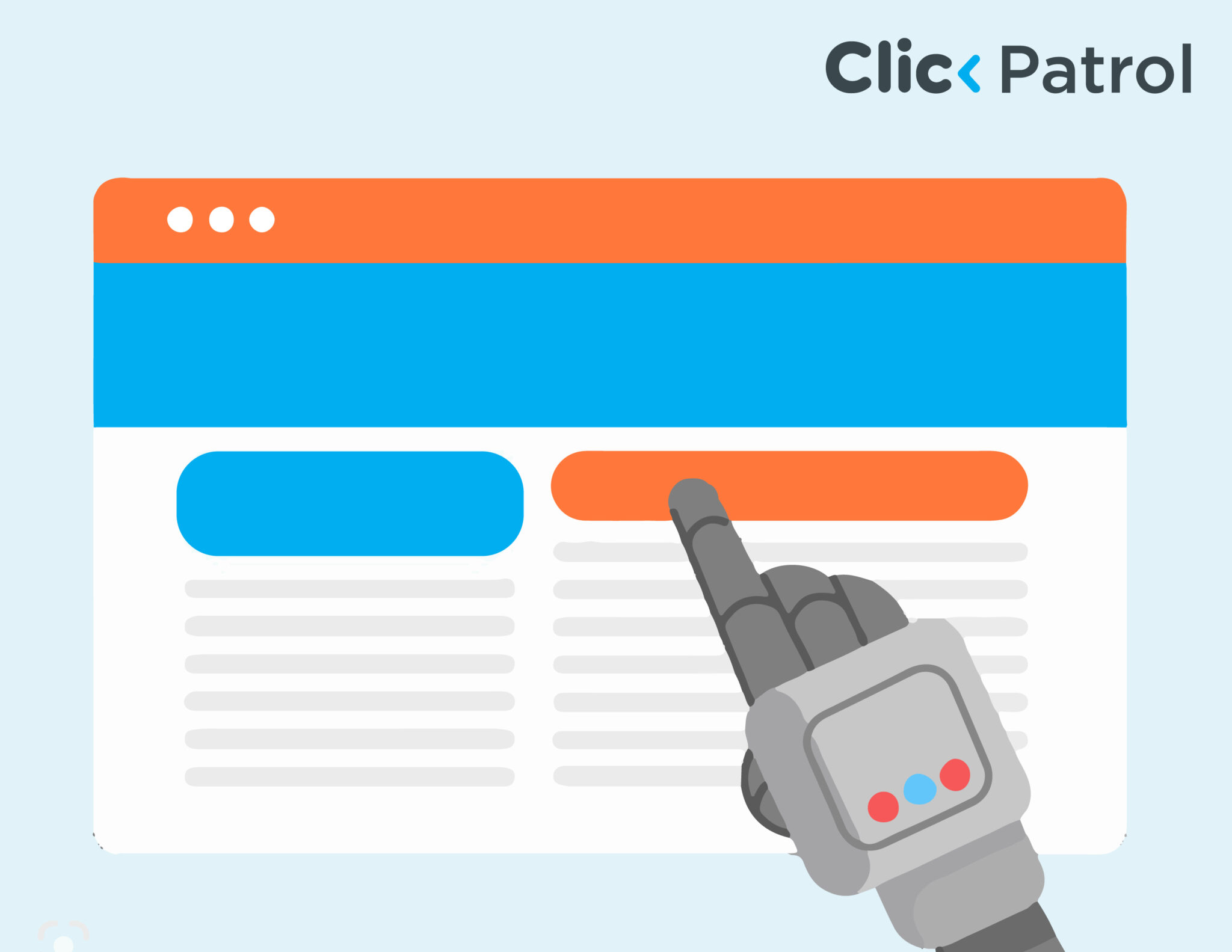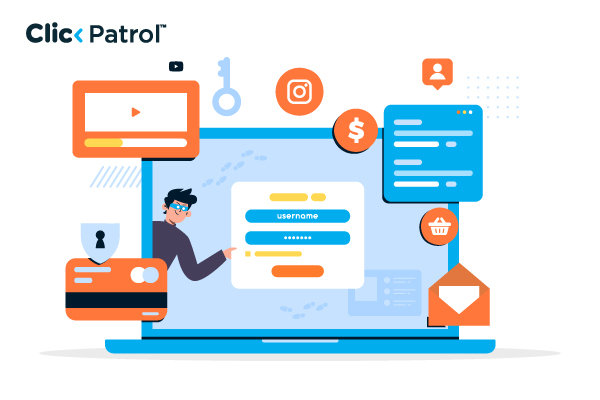Bypass CAPTCHA system (Completely Automated Public Turing tests to tell Computers and Humans Apart) is a common practice in digital spaces because it protects websites by detecting bots and automated intruders.
Cloudflare reported in 2024 that CAPTCHA is used on over 80% of websites globally to combat bot activity. However, CAPTCHA faces consistent efforts by developers and users who attempt to find workarounds due to different needs in navigating these security systems.
Ready to protect your ad campaigns from click fraud?
Start your free 7-day trial and see how ClickPatrol can save your ad budget.
This guide examines how CAPTCHA operates, methods for circumventing it, and the associated ethical and legal implications.
What is CAPTCHA, and why does it exist?
CAPTCHA operates as a security systems that validate genuine human users against automated systems. CAPTCHA technology entered the web landscape in the early 2000s, progressing from text distortion to picture-based puzzles and unnoticeable behavior monitoring methods.
The Cloudflare 2021 research shows CAPTCHA appears on more than 80% of websites to stop the following:
- Spam: The same bots automatically flood comment sections together with forms.
- Data Scraping: Bots extracting data from websites.
- Credential Stuffing: Systems conduct automatic login processes by using stolen login information.
- DDoS Attacks: Overloading servers with fake traffic.
Websites require CAPTCHA to maintain their security status, although users experience difficulties interacting with these tests. A 2023 survey by Statista revealed that CAPTCHAs make 65% of internet users uncomfortable, while website abandonment due to CAPTCHA difficulties affects 30% of users.
Why bypass CAPTCHA? Use cases, challenges, and legal risks
There are both valid and invalid reasons to bypass CAPTCHA:
Valid reasons
- Accessibility: To bypass CAPTCHA can be challenging for individuals with visual or cognitive impairments. According to a 2022 Web Accessibility Initiative report, 15% of users with disabilities experience difficulties using image-based CAPTCHA.
- Automation testing: Web developers need to circumvent CAPTCHA while testing web applications to mimic user behavior.
- Research: Web security researchers can circumvent CAPTCHA to analyze their performance.
Invalid reasons
- Web Scraping: CAPTCHA Evasions for Inappropriate Data Scraping.
- Spamming: Form automation for malicious intentions.
- Account Takeovers: Bot-assisted brute-force attacks.
- The ethical line is clear: evading CAPTCHA for malicious purposes violates the website’s terms of service and can have legal consequences.
Common CAPTCHA types
Before discussing the bypass CAPTCHA methods, let’s review the main types of CAPTCHA:
- Text-based CAPTCHA: The user must reproduce the garbled text displayed in an image.
- Image-based CAPTCHA: The system requires users to select images corresponding to a specified prompt, such as “Select all traffic lights.”
- Audio CAPTCHA: Users must listen to the audio and manually type the content they hear.
- Invisible CAPTCHA: Google’s invisible CAPTCHA system, reCAPTCHA v3, tracks user activities through behavioral analysis of mouse movements.
- Mathematical CAPTCHA: Users solve simple math problems.
- Slider CAPTCHA: Users must slide a bar to its completion point within the mechanism.
Techniques to bypass CAPTCHA
To bypass CAPTCHA is a mix of human, automated, and hybrid solutions. The most widely used approaches to bypass CAPTCHA are listed below, along with their usability and shortcomings.
Manual CAPTCHA-solving services:
Human CAPTCHA-breaking services employ human operators to break CAPTCHAs for a fee. Which are:
- 2Captcha: Solves CAPTCHAs at $0.50 for every 1,000 CAPTCHAs.
- Anti-Captcha: Offers API integration for automatic solving.
- How it functions: The service receives CAPTCHA S from customers, which are cracked by human operators in real-time and published back via an API.
Pros:
- High text and image CAPTCHA accuracy.
- Low-cost when used in small volumes.
Cons:
- Slow when processing high volumes of work.
- Not ethical for use for nefarious purposes.
Optical character recognition (OCR):
OCR programs, such as Tesseract, can crack text-based CAPTCHA by analyzing distorted text in images. How it works:
- The CAPTCHA image is pre-processed (e.g., noise removal, contrast adjustment).
- OCR software extracts the text.
- The text is input into the website.
Pros:
- It is low-cost or free (Tesseract is open-source).
- Works effectively for simple text CAPTCHA.
Cons:
- Does not work against the present CAPTCHA with severe distortion or image-based puzzles.
- Requires heavy preprocessing.
- In 2020 research, IEEE found that OCR-based solutions have less than 10% success rates compared to Google’s reCAPTCHA v2.
Machine learning and AI:
Deep learning and AI models have revolutionized CAPTCHA evading. Convolutional Neural Networks (CNNs) and Generative Adversarial Networks (GANs) can defeat image-based CAPTCHA by recognizing patterns. How it works:
- A model is trained on thousands of CAPTCHA images (e.g., traffic lights, crosswalks).
- The model identifies and selects the appropriate images.
- APIs integrate the model with scraping or automation APIs.
Pros:
- High success rate for image-based CAPTCHA (as high as 90% for reCAPTCHA v2, as per a 2022 arXiv study).
- Scalable to large-scale automation.
Cons:
- Requires high computational power and expertise.
- Dynamic CAPTCHAs necessitate model retraining.
Bots like Selenium and Puppeteer imitate human-like behavior to beat invisible CAPTCHA. How it works:
- The program imitates the user’s behavior (e.g., mouse clicks, movements).
- It tricks behavioral analysis software into flagging the bot as human.
Pros:
- Effective in beating invisible CAPTCHA like reCAPTCHA v3.
- Extremely widespread in legitimate automation testing.
Cons:
- Requires advanced scripting so that it does not get detected.
- Fails on this kind of CAPTCHA, where the user is asked directly.
Audio CAPTCHA exploitation:
Audio CAPTCHA, used for accessibility reasons, can be broken down by speech-to-text AI, such as Google Speech Recognition. How it works:
- The audio CAPTCHA is downloaded.
- Speech-to-text software reads the audio.
- The reading is transmitted to the website.
Pros:
- An extremely high rate of success for audio CAPTCHA, reaching up to 85%.
- Accessible to developers with minimal programming skills.
Cons:
- Limited to websites with audio CAPTCHA.
CAPTCHA farms:
CAPTCHA farms serve as businesses that employ budget labor teams to process large numbers of CAPTCHA. How it works:
- A CAPTCHA farm receives CAPTCHA processes through automated robots.
- Workers immediately complete these forms at the point of origin.
Pros:
- High speed and throughput.
- CAPTCHA farms offer an effective solution for tackling challenging CAPTCHA completion tasks.
Cons:
- The bulk processing costs exceed the required amount.
- Farm employees experience labor exploitation because their employers violate ethical and legal standards.
Challenges in bypassing CAPTCHA
The process of bypassing CAPTCHA faces multiple challenges related to:
- Evolving technology: Google reCAPTCHA v3 achieves 95% bot detection accuracy, according to Google Cloud data from 2022.
- Legal risks: Bypassing CAPTCHA for harmful activities violates the Computer Fraud and Abuse Act (CFAA), which applies throughout the United States and is complemented by parallel statutes worldwide.
- Ethical concerns: When users exploit CAPTCHA, their websites become less secure, and they lose the trust of visitors.
- Resource intensity: Implementing solutions based on AI technology requires significant financial commitments for hardware systems and specialized expertise.
- Rate limiting: Websites impose restrictions on CAPTCHA attempts through rate-limiting systems, which prevent both users and bots from attempting to enter multiple times after an unsuccessful attempt.
Ethical considerations
Bypassing CAPTCHA raises ethical questions:
- Legitimate use: Web application developers and accessibility tool developers should consider whether CAPTCHA is suitable for their work conditions, provided they adhere to the stated website rights.
- Malicious use: The practice of data scraping, combined with spam activities and attacks, damages websites and users and violates ethical and legal principles.
It is essential to review the following points before starting CAPTCHA workarounds.
- Consent: Has the website owner granted their acceptance for your actions?
- Impact: Does the execution of your actions result in damage to the website platform or user population?
- Alternatives: Should you reach your goal through any method other than bypassing CAPTCHA (e.g., using APIs)?
Understanding CAPTCHA bypasses: Ethics, and challenges
The process of bypassing CAPTCHA systems involves multiple technical complexities, as well as ethical and legal considerations. The traditional CAPTCHA bypass methods, including manual solving, OCR, AI methods, and browser automation, pose specific challenges to effective implementation.
Some legitimate bypass activities, such as testing and accessibility, exist, but malicious bypasses cause damage to the internet environment. Security professionals constantly face new challenges because CAPTCHA technology continues to evolve, alongside bypass methods, creating an ongoing adversarial relationship between them.
Before attempting CAPTCHA bypasses, analyze their moral implications and investigate API integration or collaboration options with the website owner. Using responsible information and ethical practices allows you to traverse this domain without violating boundaries.
Frequently Asked Questions
-
Is bypassing CAPTCHA illegal?
Any CAPTCHA-breaking activities for legitimate purposes become acceptable if you have authorization from the relevant parties.
Under U.S. law, in conjunction with the CFAA, certain countries prohibit breaking for wrongful purposes, such as spamming or scraping.
-
Can AI break CAPTCHA entirely?
AI has managed to break most CAPTCHAs, especially text- and image-based CAPTCHAs, with an accuracy rate of 90%.
Invisible CAPTCHA, such as reCAPTCHA v3, which relies on behavioral analysis, is more complicated to bypass.
-
Are CAPTCHA-solving services ethical?
CAPTCHA-breaking services are ethical when used for valid purposes, such as accessibility or testing.
Their use for immoral purposes, such as spamming or scraping, is typically illegal.
Abisola
Meet Abisola! As the content manager at ClickPatrol, she’s the go-to expert on all things fake traffic. From bot clicks to ad fraud, Abisola knows how to spot, stop, and educate others about the sneaky tactics that inflate numbers but don’t bring real results.







